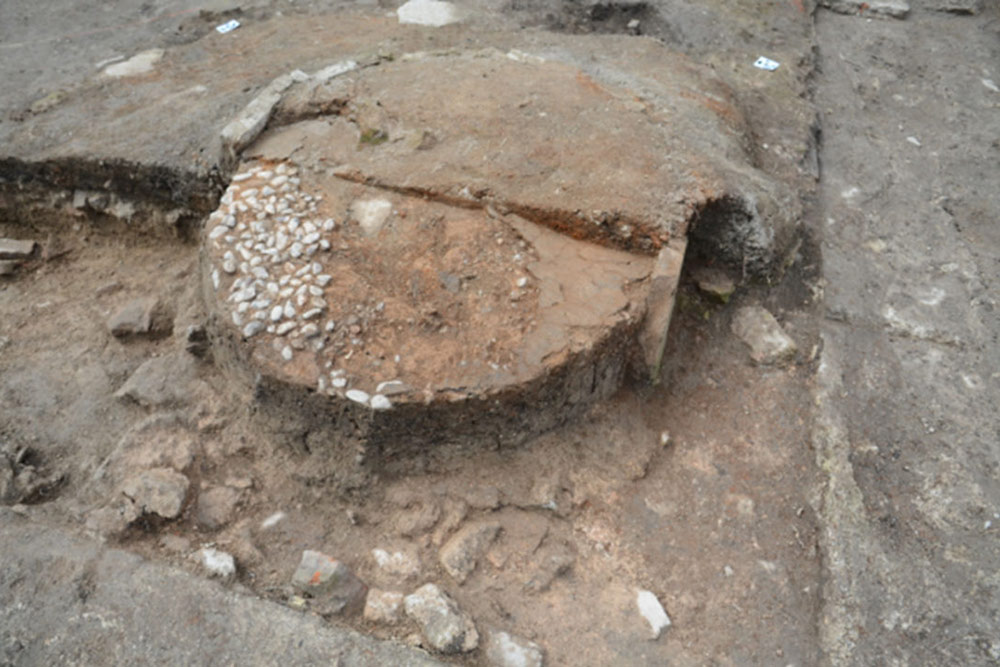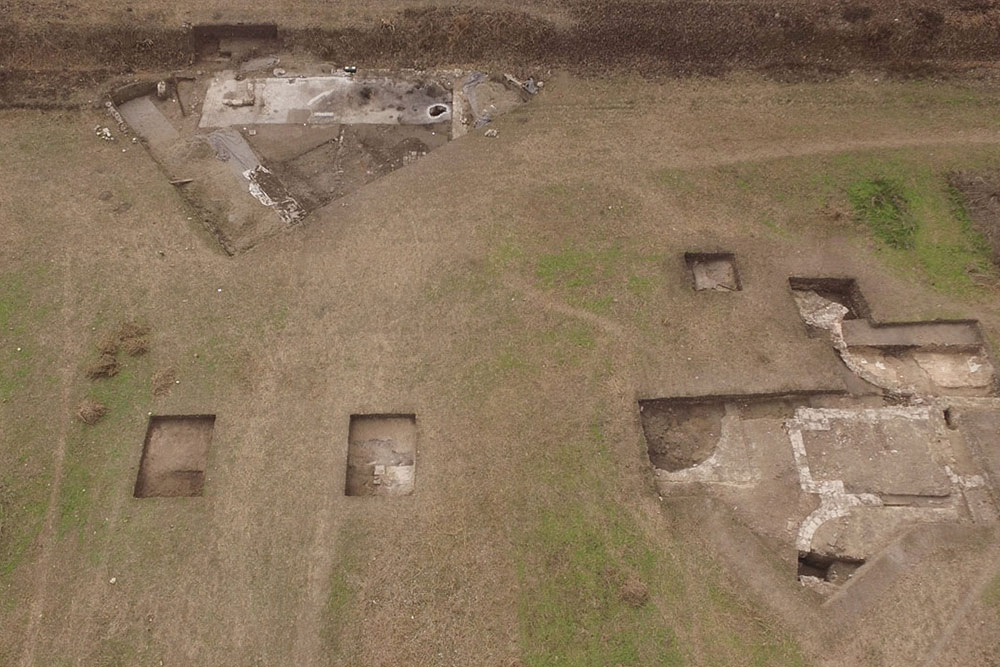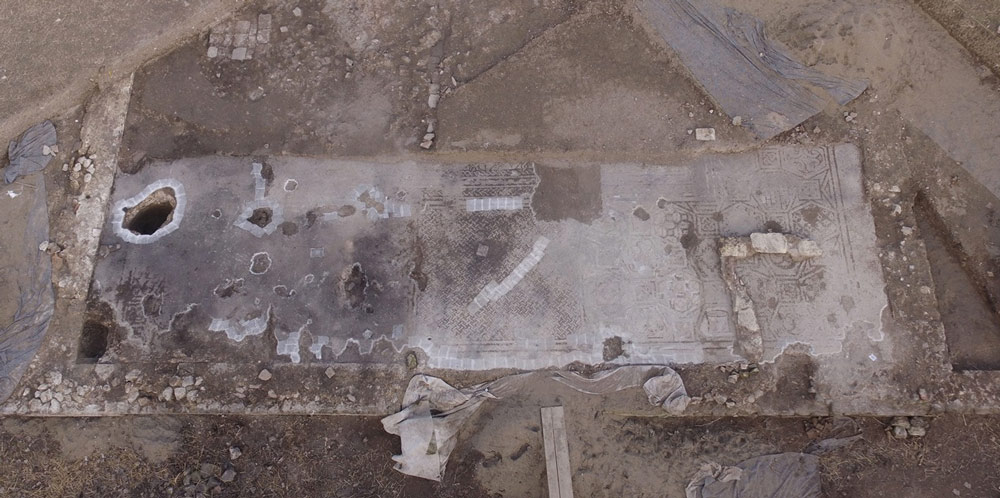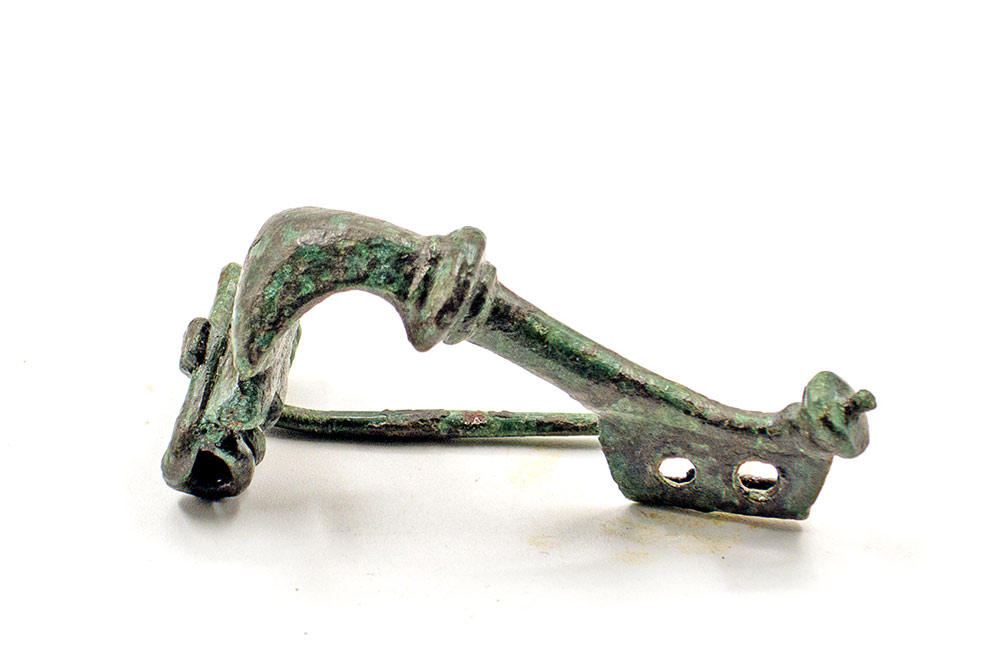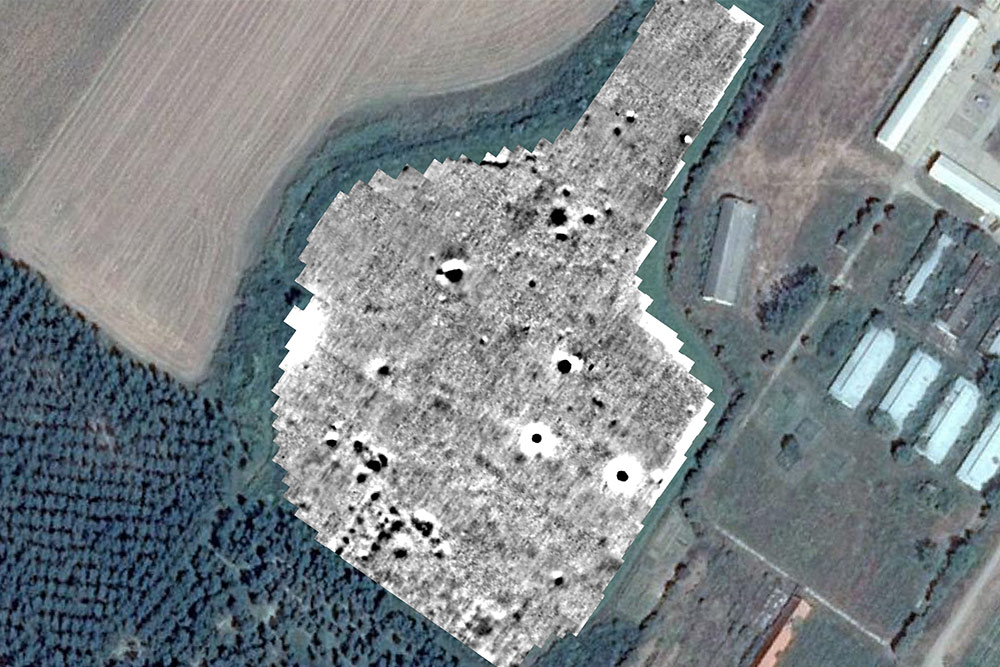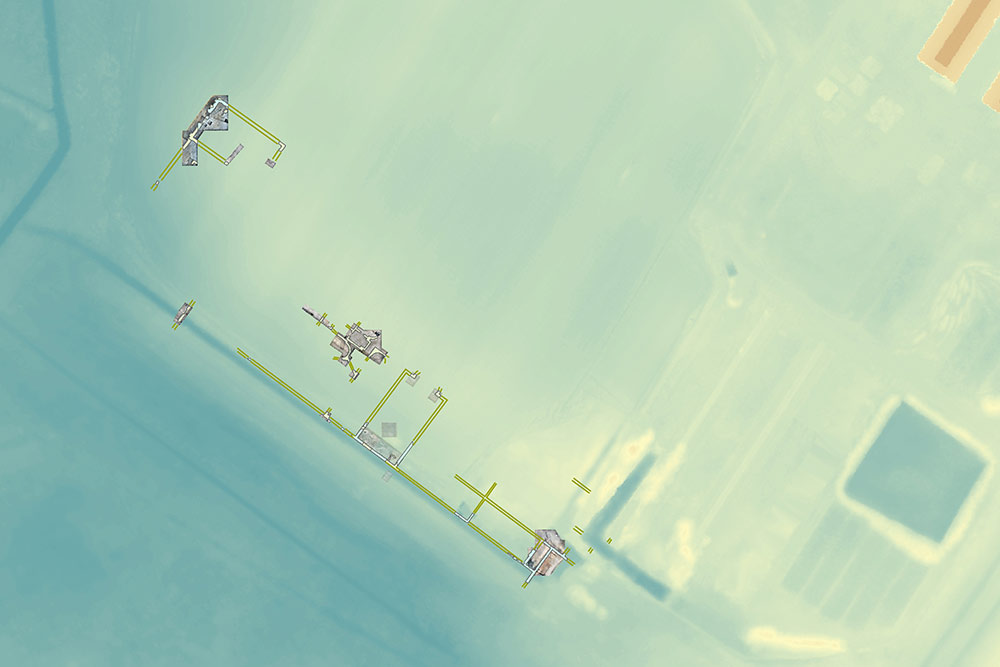Glac project
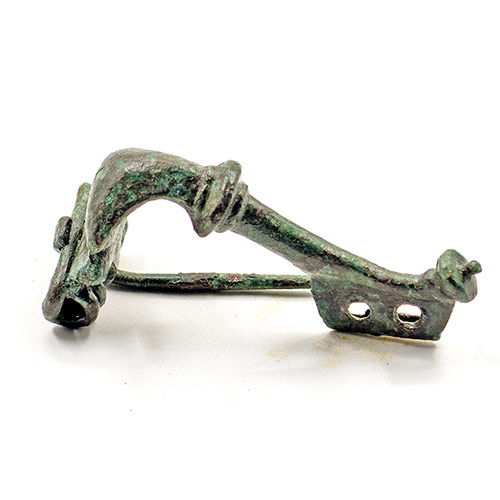
Directors of the project: Dr Stefan Pop-Lazić, prof Richard Miles
Co-operation: dr Bojan Popović, dr Milijan Dimitrijević
Institutions involved in the research process:
Insititue of Archaeology, Belgrade
University of Sidney,
Museum of Srem,
Institute for the Protection of Cultural Monuments, Sremska Mitrovica
Archaeological site of Glac
The archaeological site of Glac is located along the Sava river, 4 kilometres from Sremska Mitrovica, on the road to the village of Jarak. In Late Antiquity, this space was on the outskirts (suburbium) of one of the capitals of the Roman Empire – Sirmium. The name Glac originates from the surname of an inhabitant of Sremska Mitrovica who purchased a field in this location and built a farm there. The toponym Glatz pst., a shortening of Glatz puszta, meaning Glac’s Heath can be found on the late 19th century plans.
The earliest knowledge about the existence of an ancient site on Glac’s farm dates to the 19th century. The local teacher and Sirmium researcher from Mitrovica, Ignjat Jung, is most renowned for these insights. He recorded the remains of Roman buildings in several locations and described rooms decorated with luxurious, marble slabs and green porphyry. In one semi-circular room, he discovered a floor covered with a mosaic, and the bases and shafts of limestone columns. Jung made a site plan, noting a surface of 350 x 200 metres, surrounded by water channels. He believed at that time that Glac’s farm was the site of the military camp of the Avar ruler (khagan) Bayan who besieged Sirmium at the end of the 6th century.
Further data on Roman finds originate from WWI. At that time, the whole area around the Sava river was crisscrossed with trenches and cannon positions of the Austro-Hungarian army. There is a record made by Lieutenant Dragutin Trstenjak that details an 80-square metre mosaic discovered during the digging of the defensive trenches. Among other things, the report mentions that a sarcophagus and a head of a marble sculpture were also uncovered.
Unfortunately, up until the end of the 19th century there were no archaeological excavations. In the period prior to that, a vast amount of the site was used for farming and some parts of the Roman villa were destroyed during the construction of the agricultural property. The first detailed research was carried out in 1994 in several locations. It was established that the site extends over several hundreds of metres. A wall of a large building that stretches over several tens of metres, as well as rooms decorated with mosaics next to it, were then uncovered.
Although this specific site was legally protected, research only began in 2014 with a geomagnetic survey of an area of 4ha. The survey recording displayed the existence of the remains of a large building underneath the field that stretches over several hectares. A second geophysical survey, conducted in 2019, brought to light a more precise view of the structures below the ground. Based on four archaeological excavation seasons and the underground image, it could be supposed that a huge building complex was erected on the Glac site. Among the luxuriously decorated buildings, the centrally positioned rooms stand out, with the largest reception room covered with mosaics. Mosaics were also found in the eastern part of the complex, inside the area of the Mitro-Srem Company. Aside from mosaic decoration, slabs of different luxurious stones were found in the central part of site. Most of them are green porphyry from Peloponnesus (Porphydo verde antico – Krokees) and yellow marble from Tunis (GIallo antico – Symithus), although red porphyry (Porfido rosso – Gebel el Dokhan) and Breccia policroma della Vittoria (Akrini) were also found.
The dating of the complex is based, thus far, mainly on a find of single coin below one of the mortar floors. It was struck during the reign of Emperor Maximianus Herculius.
During ancient times, Sirmium was one of the largest urban centres on the territory of the Balkans, with an imperial palace built at the beginning of the 4th century. Apart from the imperial palace in the centre of Sirmium, historical sources mention that the Roman Emperor Maximian Herculius built a palace near Sirmium. Given that the site of Glac lies in the vicinity of the ancient city, it is highly likely that the late antique building complex at the site is the palace that was described by Roman writers.
Сарадници
Publications:
Jung, I. 1898, Izvještaji muzejskih poverenika i prijatelja. Mitrovica. Vjesnik arheološkog muzeja u Zagrebu N.S.III 1898: 239-242.
Jung, I. 1902, Izvještaji muzejskih poverenika i prijatelja. Mitrovica. Vjesnik arheološkog muzeja u Zagrebu N.S.VI 1902: 229-232.
Milošević, P. 1971. Earlier Archaeological Activity in Sirmium. in Sirmium. Archeological investigations in Sirmian Pannonia II. ed. Đ. Bošković, 3-14: Beograd: The Archaeological Institute of Beograd. Denison University. The City University of New York.
Милошевић, П. 2001. Археологија и историја Сирмијума. Нови Сад: Матица Српска.
Miladinović-Radmilović, N. Radmilović, M. 2015. Pisma Ignjata Junga. Sremska Mitrovica : Blago Sirmijuma.
Јеремић, М. 2016. Сирмијум. Град на води. Београд: Археолошки институт.
Dimitrijević, M. Whitehouse, J. 2021. From “porta Fossiensis” to Fossae. Exploring the Roman Road System in the Glac Study Area east of Sirmium. Starinar LXXI/2021: 127-161.


